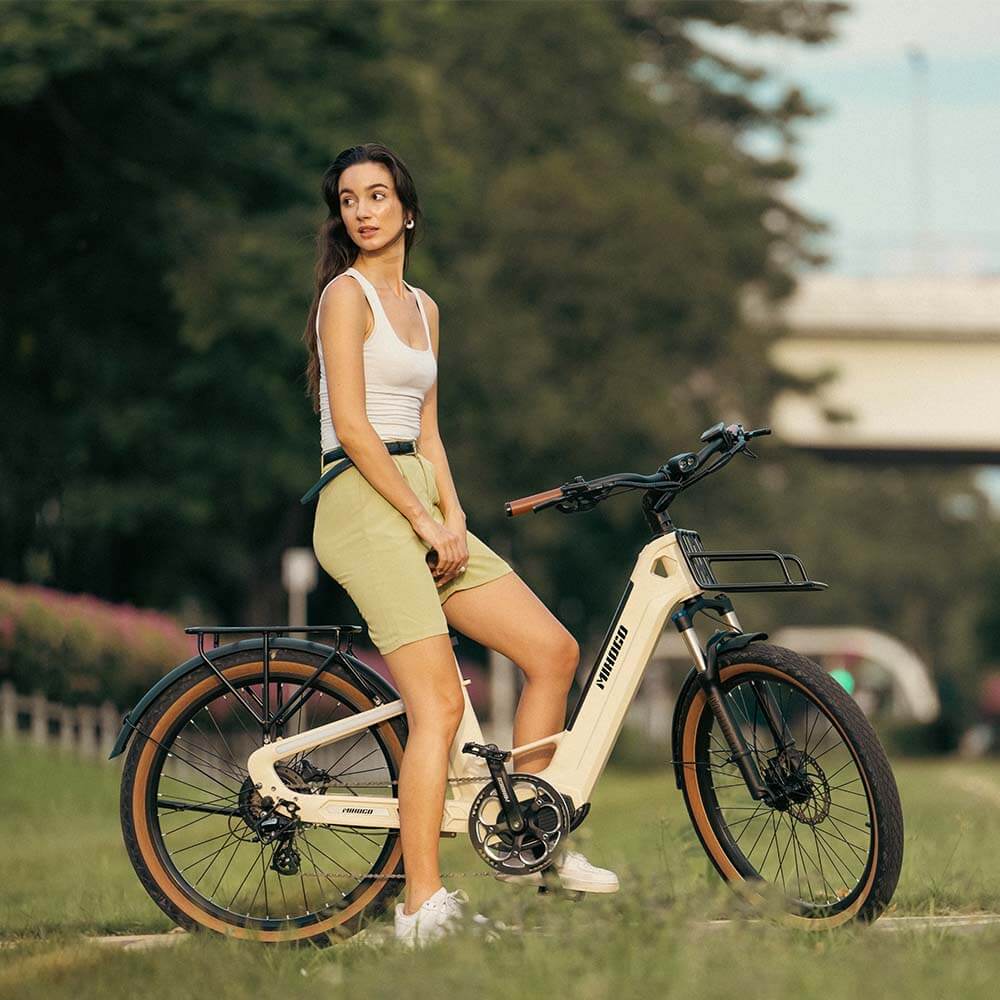Understanding Your Mihogo Battery Technology
The Mihogo Mini features a Panasonic Semi-Solid Lithium-ion Battery with an extended cycle life of up to 1200 cycles, while the Mihogo NX offers a swappable dual battery solution providing over 80 miles range. These advanced battery systems require specific care to maintain optimal performance throughout their operational lifespan.
Key Battery Specifications Across Mihogo Models:
- Mihogo Mini: Panasonic Semi-Solid Lithium-ion with 100km assist range
- Mihogo NX: Dual 48V battery system with 1.4kWh total energy capacity
- Mihogo RX 2.4: Quickly-chargeable battery with vibrant LCD monitoring
- Mihogo Air Max & ONE Utility: Advanced lithium-ion systems optimised for European commuting
Essential Battery Care Practices for European Climates
Temperature Management for Year-Round Performance
European weather presents unique challenges for e-bike batteries, from freezing Alpine winters to Mediterranean summer heat. Lithium-ion batteries perform optimally between 10°C and 25°C, making temperature management crucial for European riders.
Winter Care (Below 5°C):
- Store your Mihogo indoors when temperatures drop below freezing
- Allow the battery to warm to room temperature before charging
- Reduce expected range by 20-30% in cold conditions
- Consider winter e-bike maintenance strategies
Summer Care (Above 30°C):
- Park in shaded areas to prevent overheating
- Avoid charging immediately after riding in extreme heat
- Remove the battery if storing the bike in direct sunlight
Optimal Charging Practices
Daily Charging Routine:
- Charge your battery when it reaches 20-30% capacity
- Avoid completely draining the battery to 0%
- Unplug once fully charged to prevent overcharging
- Use only the original Mihogo charger provided
Storage Charging: For extended storage periods (over two weeks), maintain the battery at 50-60% charge level. This preserves cell integrity and extends overall battery lifespan significantly.
Proper Storage Techniques
Short-term Storage (1-4 weeks):
- Store at room temperature (15-20°C)
- Maintain 40-60% charge level
- Check charge monthly and top up if necessary
Long-term Storage (1+ months):
- Remove battery from the bike
- Store in a dry, temperature-controlled environment
- Check and recharge every 2-3 months
- Consider e-bike winter storage solutions
Maximising Battery Range and Efficiency
Riding Techniques for Extended Range
Pedal Assist Optimisation: Adjust pedal assist levels based on terrain, using lower assistance on flat surfaces and higher levels for hills to extend battery life. The Mihogo RX 2.4's vibrant LCD display helps monitor real-time battery consumption for optimal efficiency.
Terrain Considerations:
- Use eco-mode for flat urban commuting
- Engage higher assist levels only when necessary
- Plan routes to minimise steep climbs when possible
Regular Maintenance Schedule
Weekly Checks:
- Clean battery contacts with a dry cloth
- Inspect charging port for debris
- Monitor battery performance through your bike's display
Monthly Maintenance:
- Perform a full charge cycle (20% to 100%)
- Check for physical damage or swelling
- Clean the battery housing with a damp cloth
Annual Service:
- Professional battery health assessment
- Firmware updates if available
- Consider professional e-bike servicing options
Troubleshooting Common Battery Issues
Reduced Range Performance
If your Mihogo battery isn't delivering expected range:
- Check tire pressure (properly inflated tires improve efficiency)
- Verify assist level settings
- Ensure battery connections are clean and secure
- Consider battery age and cycle count
Charging Problems
For charging issues:
- Inspect the charger cable for damage
- Check the charging port for debris
- Ensure the power outlet is functioning
- Try charging in a different location
European Regulations and Safety Standards
Mihogo bikes adhere to European Union standard EN15194 and have obtained safety certification from TUV Rheinland, ensuring your battery meets strict European safety requirements. Understanding these standards helps ensure compliant operation across EU member states.
Key Compliance Points:
- Maximum continuous power: 250W for EU compliance
- Speed limitation: 25 km/h with assistance
- Battery disposal: Must follow EU WEEE Directive guidelines
Battery Replacement and Upgrade Options
When to Consider Replacement
Typical signs your Mihogo battery may need replacement:
- Range decreased by 40% or more from original capacity
- Charging time significantly increased
- Physical damage or swelling
- Age exceeding 3-5 years with regular use
Recycling and Environmental Responsibility
European regulations mandate responsible battery disposal. Contact your local Mihogo dealer or municipal recycling center for proper lithium-ion battery disposal. Many European cities offer specialised e-bike battery recycling programs.
Future-Proofing Your Battery Investment
Solid-state batteries and fast-charging technology are emerging trends in 2025, but proper care of your current lithium-ion system ensures maximum value retention and performance. Stay informed about battery technology advances and upgrade paths.
Investment Protection Strategies:
- Follow manufacturer maintenance guidelines
- Keep charging equipment in good condition
- Document battery performance for warranty claims
- Consider extended warranty options
Conclusion
Your Mihogo e-bike battery represents advanced lithium-ion technology designed for European conditions. By following these care guidelines, you'll maximise your battery's lifespan, maintain optimal performance, and protect your investment in sustainable transportation. Remember that proper battery care not only saves money but also supports environmental sustainability by extending product lifecycles.
For specific questions about your Mihogo model's battery system, consult your user manual or contact Mihogo EU customer support for personalised guidance.






